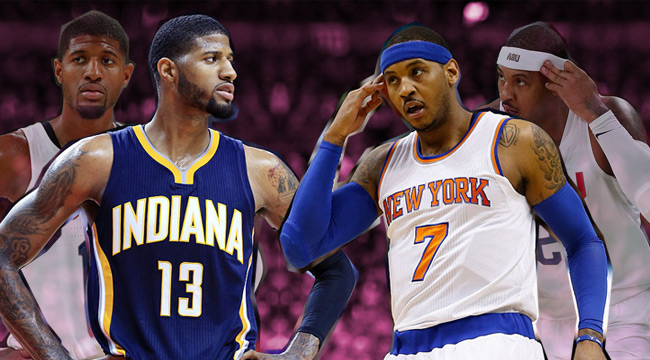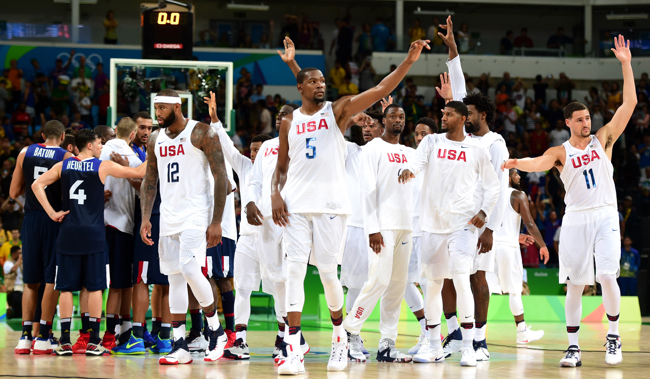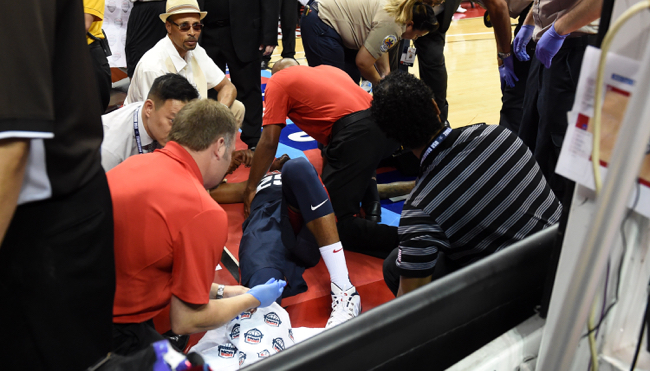
USA Basketball didn’t send its best squad to the Rio Olympics this summer, and it’s starting to show. A trio of nail-biting victories has exposed some ugly flaws in both their schemes and preparation, deficiencies they may have been able to hide better if they were at full strength with Team USA mainstays like LeBron James, Russell Westbrook, Chris Paul, Steph Curry, etc. in attendance.
But those superstar names and more opted against making the trip to South America to defend the gold, most citing reasons like fatigue and wanting to rest up for another grueling 82-game season ahead (and Zika, of course, although they won’t admit it). It’s perfectly understandable. Though they won’t officially forbid their players from participating, several NBA owners have either privately or publicly expressed concern over the years about their stars risking injury to play for Team USA.
The NBA season is long enough as it is without tacking on a couple of more months of full-contact basketball. Beyond injury, the worry is that the players who participate might simply wear themselves out and not perform as well during the regular season. But does the data actually support those fears?
That’s what Neil Paine of FiveThirtyEight.com set to find out. The answer was surprising, to say the least. Rather than a decline in production, Team USA members actually played better the following season:
My colleague Jim Pagels came to that conclusion in 2014 when comparing Team USA members’ per-minute production with what would be predicted by Basketball-Reference’s Simple Projection System, finding that players produced better NBA Player Efficiency Ratings and Win Shares per 48 minutes than expected after donning the Stars and Stripes. My own research backs this up; U.S. players tend to exceed their projected Box Plus/Minus (BPM) by about 0.4 points per 100 possessions the year after playing a major tournament for the United States, and they beat projections by nearly 0.7 points/100 possessions after playing in the Olympics specifically.
Certainly, stats don’t tell the whole story. The methodology alone used to arrive at this conclusion is enough to make your head spin, a reality Paine readily admits.

For starters, those numbers don’t account for time lost due to injury. But then Paine took it a step further to ensure his reasoning was sound. He generated wins above replacement predictions for the men’s national team players, then compared them to how they actually performed the season after playing for Team USA. Approximately 65 percent of them played better than they expected.
Still, this opens the door for faulty cause/effect reasoning. There simply isn’t enough data to conclude that playing for Team USA actually gave these players a boost. There are too many variables left out of the equation.
It may also be a case of coincidence over causality — perhaps USA Basketball tends to select players who are particularly primed for improvement; or who feel they have few enough nagging injuries to participate, implying they’re overall healthier than the average player; or maybe the standard aging curve of our projections doesn’t perfectly apply to the kinds of transcendent players who are usually tabbed for the Dream Team.
It does, however, show that USA Basketball players don’t tend to decline the season after. It also helps mitigate certain other logical fallacies. “Look at what happened to Paul George when he snapped his leg in half like a twig and lost the whole next season and threatened his entire career” is an excellent example of the anecdotal fallacy. A singular occurrence like that isn’t enough to show a trend. He’s the exception, rather than the rule.
Tell that to the Indiana Pacers, you say. Obviously, there’s risk involved. But that’s true any time you step on to a basketball court, as most NBA players do at some point every offseason anyway, whether that means suiting up for the Drew, the Seattle Pro-Am, or any number of summer league pick-up games.

It’s also not a stretch to surmise that Team USA players simply benefit from the experience overall. They spend significant time with a handful of other NBA and college coaches who they can learn from; they are typically asked to step out of their comfort zone and assume roles different from what they’re accustomed to (often more team-oriented roles); And, they can pick up all sorts of skills from their superstar teammates to help expand their game. Then there’s the old cliche about simply being around the “winning culture” associated with Team USA.
Of course, the findings above won’t put the conversation to rest, especially for the stats skeptics out there. Plus, it’s ultimately up to each player’s individual preference. This particular Olympic team happened to see an alarming trend toward not participating among its usual top-tier players, something akin to the hastily-assembled 2004 incarnation that lost in Athens.
Granted, the current men’s national team is still loaded with talent and entered the games as the overwhelming favorites, but the recent close calls during group play show once again why Coach K and company put such an emphasis on consistency and long-term commitments to USA Basketball.
